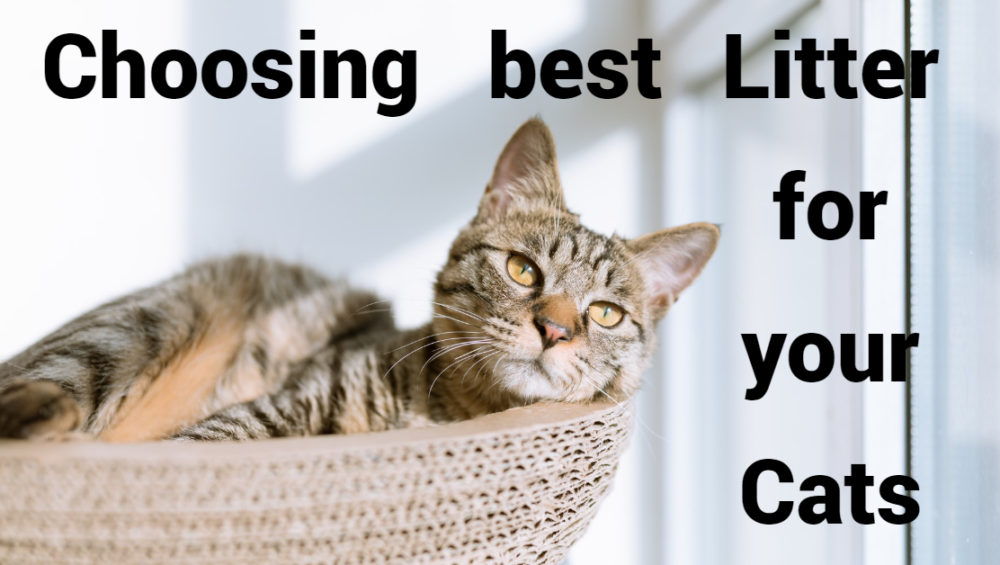If you’re thinking about adopting a cat or kitten, it’s important when setting up to spend time finding the perfect litter for you and your pet.
Your cat may already be accustomed to a certain type of litter, so discuss with the previous owner or donation shelter what type they use and your cat’s toileting behaviour. This is a great starting point, even if you end up trying a different kind of litter at a later date. Cats are clean and tidy animals.
Your cat’s preference may revolve around how sensitive their paws are, or they may just prefer one type of litter more than another.
Choosing litter for your cat
There are many different types of litter, but generally they can be split into two categories – clumping and non-clumping. Clumping litter absorbs moisture more quickly so you can scoop and remove the clumps when they form. The box will still need a thorough clean at times though. Non-clumping litter absorbs moisture more slowly and has ingredients that eliminate unpleasant smells. This type of litter needs changing and cleaning at least once a week. Choosing between a clumping or non-clumping litter is a great place to start.
Types of Cat Litter
Clay – Quick clumping
The most common types of cat litters are clay-based, which can either be clumping or non-clumping. The reason why clay litters are so popular is that they are really good at absorbing urine and neutralizing the smell. Also, most cats will instinctively use this litter and you won’t have to train them. It is available in both scented and unscented varieties.
Advantages:
· Clumps quickly for easy clean-up
· Good odour control
· Typically needs to be changed less frequently than other litters
Disadvantages:
· Not biodegradable and may create dust
Corn – Natural clumping
Corn is another type of litter available on the market. Admittedly this is one type I am a bit hesitant to try as I am skeptical at how well it actually works, and I’m scared it’ll make my house smell like a barn. But nevertheless, brands like World’s Best are gaining popularity and are made from corn. They’re also formulated to be clumping too, so it can last longer. It is available in natural and scented varieties
Advantages:
· Dust-free
· Biodegradable and earth-conscious
Disadvantages:
· May be pricier than other litters
Coconut Husk – Clumps lightly
Coconut litter, made from coconuts, is an eco-friendly option with no added scents. It has good urine absorption qualities but cannot mask ammonia odours for long. It also contains no dust. It is natural scent
Advantages:
· Dust-free
· Biodegradable and earth-conscious
· Made from a renewable resource
· Compostable
Disadvantages:
· May be more difficult to find than more traditional cat litters
Wheat – Natural clumping
Litter is made from wheat. It is especially for cats who are sensitive to scents or dust. It is available in natural and scented varieties
Advantages:
· Naturally clumping and odor- absorbing
· Dust-free
· Biodegradable and earth-conscious
Disadvantages:
· May not clump as firmly as clay litter
· Must be stored carefully to prevent pests
Wood / Pine – Does not clump
Litter made of wood like pine pellets is another material some cat litters are made out of. Pine pellet litter absorbs liquid super well and then turns to sawdust, so you only have to sift out the sawdust and can keep the unused pellets. It is natural scent
Advantages:
· Natural pinewood by-product
· Natural deodorizer
· Dust-free
· Environmentally safe and biodegradable
· Can be used for landscape mulch and composting
Disadvantages:
· Some pet parents may find pine scent too strong
Walnut Shell – clumping and non-clumping varieties
The litter is made from 100% walnut shell. That’s as natural as it gets without turning your place into a jungle.
The walnut shells organically neutralize odour better than any other natural litter and absorb three times better than clay litter. That works for both of you. It is natural scent
Advantages:
· Highly absorbent
· Biodegradable and made from a renewable resource
· Low dust, low tracking
Disadvantages:
· May not clump as easily as clay litter
Recycled Paper – Does not clump
Another semi-popular alternative to clay is using recycled paper. The materials like old newspapers, phone books, and magazines are turned into paper pellets. These are supposedly highly absorbent and control odour while being safe and non-toxic for your kitties. It is unscented
Advantages:
· Eco-conscious
· Dust-free
· More affordable than most natural litters
· Great for cats recovering from surgery
Disadvantages:
· Less odour control than other litters
· Not flushable or compostable
· May need more frequent changes than other litters
Silica – Does not clump
Crystal litter is made of silica gel, which absorbs liquids much better than traditional clay litter and traps in odours.
It does not clump urine, but the crystals are able to trap urine on the inside, and the outside stays dry. The litter box won’t become a giant mushy wet mess like with traditional litters, and it traps in the pee odour so well you only need to switch out the litter entirely once per month. It is available in scented and unscented varieties
Advantages:
· Highly absorbent
· Can be reused over a period of one month
· Trackless and dust-free
Disadvantages:
· May be more expensive than other litters
· Some cats may not like the feel of crystal litter on their paws






